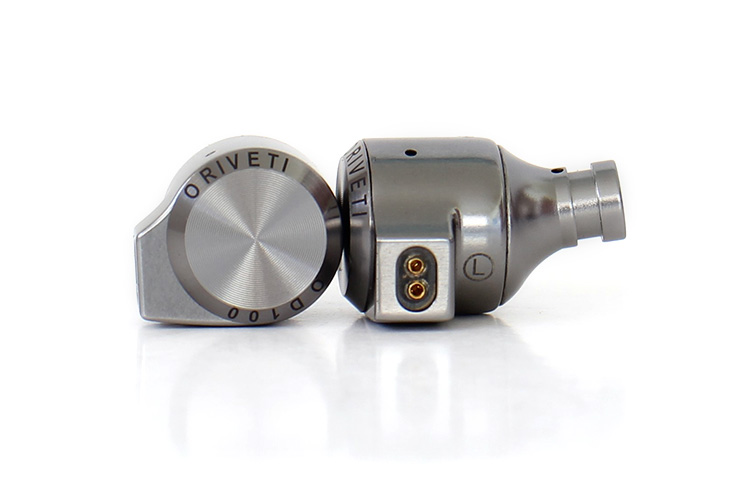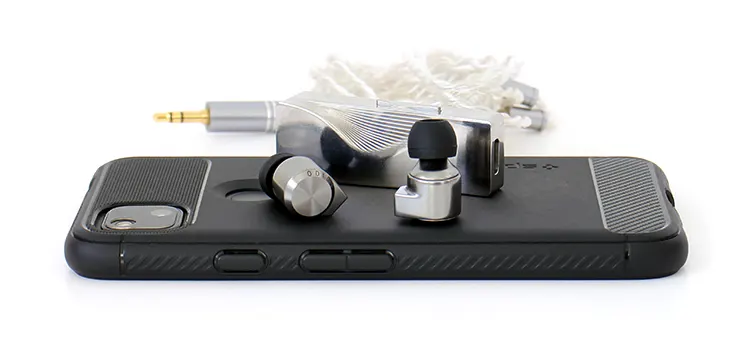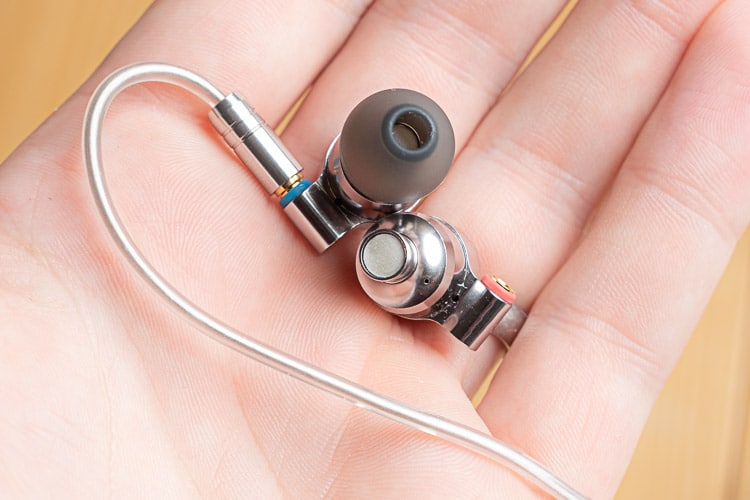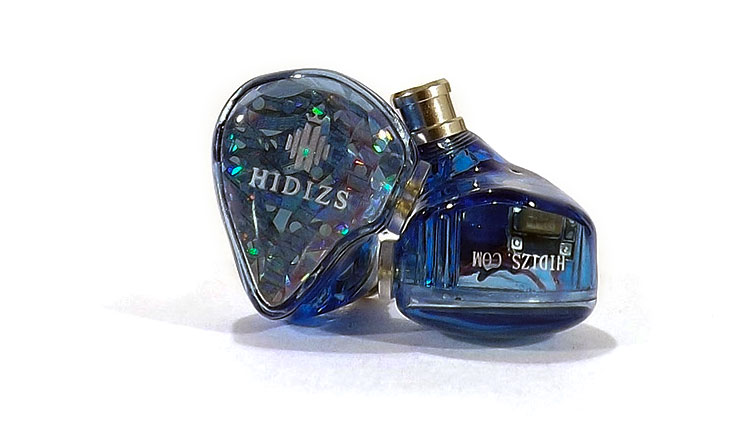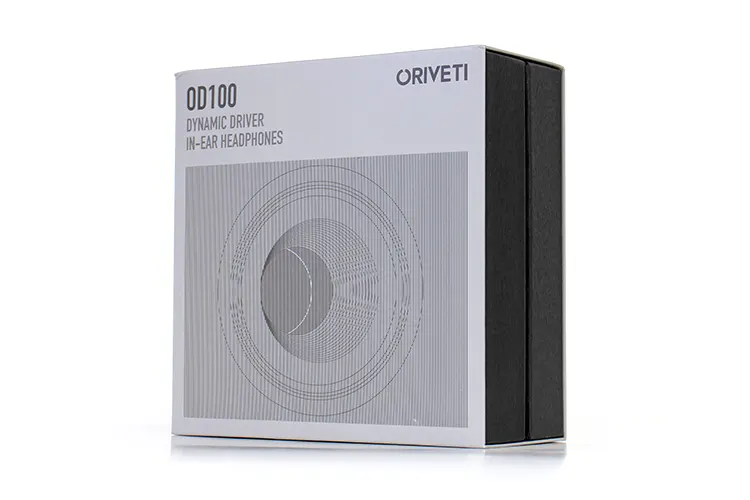Synergy
Efficiency
The OD100 uses a 16Ω driver so it does not benefit from high power nor should you expect an upscale by increasing its available power input.
If a mobile device can power the ORIVETI OD100 with a decent amount of obtainable loudness then it is safe to say that the OD100 can be adequately powered with anything you have off hand.
The OD100 seems to be designed to work with low-output devices well and does not need anything special as far as amplification which is a convenience in itself. That means you can use anything you have and they will perform consistently.
Pairings
My daily mobile device is a Google Pixel and they are not known for sound quality but I was surprised at how well the ORIVETI OD100 was driven directly off the headphone jack playing FLAC files on Jet Audio Pro.
I had FiiO’s KA5 at my desk and it paired adequately with the OD100. It gave me a nice increase in quality over my mobile phone but it did more so with the recent MOONRIVER 2: Ti. Not only did they match up sonically but their construction is similar and the polished metal construction of these two paired up well visually.
Again, high power and special amplification will not give you a higher level of output quality with this IEM. The improvements are subtle and you will only obtain a slight gain.
They sounded the same off my iFi Audio iDSD Diablo, the HIFIMAN EF400, and my FiiO M11 Pro. It was also adequately powered by a ddHiFi TC35C which is a small device that offers a clean output but does not cough up much power and is rated at just 30mW per side on a good day.
Select Comparisons
Tin HiFi T4
Technical
You would think at first glance that these two IEMs came from the same factory but they do not. The OD100 has so many similarities to the Tin HiFi T4 that only the sound differences should be of most importance here.
The T4 uses a single 10mm CNT driver with a similar frequency response except for a claim that it is capable of hitting a 10 Hz note instead of having a 20 Hz limit as specified on the OD100.
The CNT driver measures out at 32Ω and could take advantage of most portable amplifiers more so since they usually max their output at that same impedance and not at the OD100’s 16Ω rating. But that is something minuscule.
The T4 was aimed at a similar audience and at those who wanted something better than your average mobile phone accessory inclusion and superstore endcap models.
Design
Both these IEMs use a cylinder-style shell and an angled end nozzle with a similar backplate except the design behind the T4 backplate is more pronounced. However, the T4 lacks the small intricacies like the etched branding found on the OD100.
The significant difference here is the connectivity since the T4 uses the MMCX type instead of the 0.78mm plug. But that does not do anything for the IEM sonically and is a moot feature. Both stock cables use 3.5mm connectivity exclusively.
Surprisingly, the T4 comes with a nice storage case and is probably one of the nicest included in this price category. The T4 does include a smaller quantity of tips with a total of six versus the OD100 which comes with nine sets included altogether.
Performance
The T4 has a softer sonic demeanor in general, particularly in the midrange and treble regions. It does not produce such a forward-sounding midrange as the OD100. However, if we were to speak of the T5 also from TIN HiFi then the scale would tilt the other way around.
The T4 seems to project a deeper sense of depth and it is also taller in scope. Overall, dynamism is best portrayed on the OD100, however, but some might like a less aggressive tune and would probably prefer the T4 in that case.
Hidizs MS2 Mermaid
Technical
Hardly anyone talks about this model anymore, however, it is a highly competitive one that offers a lot of bang for the buck in the sub-$100 mark. It has been a budget go-to model of mine for quite some time now.
Hardware-wise the MS2 Mermaid uses a two-driver hybrid array consisting of a titanium-coated Macromolecular composite diaphragm. The second driver is a Knowles RAD 33518 balanced armature driver.
The driver array is coupled together by an AVX tantalum capacitor-equipped two-way crossover circuit. It sounds as if that will make it perform best but if it is not done right, a multi-driver array can lose coherency and sound off plus the different distances of the drivers to the ear must be just right or it can contribute to the coherency issue.
Design
These two are opposites as far as design. The MS2 uses a resin body while the OD100 uses an all-metal body that gives off an industrial character. Both are comfortable to wear but I prefer the cylinder shape since it barely touches my inner ear and just the canal.
One of the cool aspects about the MS2 Mermaid is that they are fashionable in the sense that they come in various colors, 5 in total to be exact. With the OD100, you get an industrial metal polished look and there are no choices except for one.
The stock cable hits a similar quality level in that it uses a braided set of cables with metal hardware and 3.5mm connectivity on the input end. The earbud connectivity uses the same .78mm dual-pin setup and their stock cables are interchangeable.
Performance
Off the bat, the MS2 Mermaid bass response is a notch above the OD100 in output quality but the treble response is the opposite and seems roughly presented on the MS2, more so than on the OD100. So, this trait makes the treble response on the MS2 fatiguing more so.
So yes, bass is the Mermaid’s best trait but the midrange presents two peaks that nitpicky audiophiles might find irksome. Then you add the extra sharpness and over-the-edge treble and I would say most will prefer the OD100 sonically unless they are in a party mode and want that extra low-end kick.
There is a better sense of overall coherence as well emitted from the OD100 since the single dynamic driver does not need crossover points and coherency becomes a tricky issue with multi-driver implementations.
At the budget-friendly level, most IEM makers just leave well enough alone and do not do further tuning and refinement and that becomes an easier task if all you have to deal with is one driver. That is what we have here.
Our Verdict
The ORIVETI OD100 is a worthy contender in the sub-$100 class and is one to consider if you want an earbud set that takes well to sound shaping, equalizers, and bass-boosting implementations and one that is not finicky as far as a source.
It is also built like a tank, a tiny tank of course. Plus, it comes with an included accessory list that is ample considering where ORIVETI set the retail price of this set.
The ORIVETI OD100 is certainly a step above what you will find in a superstore endcap and they perform similarly to some IEMs costing twice as much. Add to that a robust build, a decent cable plus a nice carrying case and it is an offer hard to pass up.
ORIVETI OD100 Technical Specifications
- Driver: Exclusive DLC 9.2mm dynamic driver
- Impedance: 16 Ω
- Frequency response: 20Hz to 20kHz
- Sensitivity: 105 3db/mW 100Hz
- Distortion: 0.08%
- Plug: Gold plated 3..5mm stereo plug

